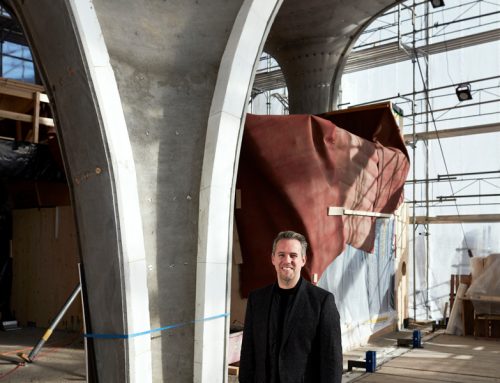
Many drug ingredient makers in China remain shut or have cut their output. This is a huge problem, not only for us, but for all countries worldwide.
The Covid-19 pandemic has shown the need for South Africa to manufacture life-saving drugs.
“We have done a huge amount of research into new ways of manufacturing generic life-saving medications in South Africa, specifically for Aids, tuberculosis, malaria, cancer and influenza,” says Professor Paul Watts, holder of the SARChI Chair in Microfluidic Bio/Chemical Processing at Nelson Mandela University.
“None of the advanced pharmaceutical intermediates (APIs) or drug substances for HIV, TB and malaria are currently made locally, which makes them incredibly expensive, and with the advent of the coronavirus there is expected to be a significant decrease in supply.”
In any drug or tablet, from a headache tablet to a tablet for HIV, about 70% of the content and cost is the drug substance or advanced pharmaceutical intermediate (API), which is the central ingredient. The other 30% comprises substances called excipients that help deliver the medication to your system, such as lactose or mineral oil.
The majority of South Africa’s APIs are imported from India or China, and India also heavily relies on China for raw materials to make their medicines. Many drug ingredient makers in China remain shut or have cut their output. This is a huge problem, not only for us, but for all countries worldwide. The US Food and Drug Administration has expressed the same concern that the coronavirus pandemic will undoubtedly lead to shortages of certain critical drugs.
“Surely this is a clear indicator that we must start the process to manufacture quality products in Africa for Africa at a lower cost,” says Watts, who has a doctorate in bio-organic natural product chemistry. It has taken Watts and his team 20 years of collaboration with researchers in the UK to develop the new technology to not only develop the capacity to make the APIs in South Africa, but to make them for 20% to 30% cheaper.
Watts explains that over the past 10 years South Africa has spent in the region of R120-billion buying in Aids, TB and malaria APIs from India, and a significant additional amount buying in from China. Add to this the cost of putting it into tablet form, which is done by local pharmaceutical formulation companies, and you get some idea of the total cost. He adds that because of the costs of the medication, there’s simply not enough to meet the huge demand.
The local manufacture of key generic drugs for major diseases in South Africa and Africa could ensure that more people have access to the drugs. It could also save billions of rands, create jobs and establish a new manufacturing industry. Local manufacture would also mean the quality of the APIs is assured, which is currently not the case in all countries in Africa.
Watts explains the team is at the point where, for example, three different Aids drugs (Lamuvidine, Emtricitibine and Efavirenz) have been manufactured at the research lab on campus and they are now pursuing intellectual property protection in South Africa, the US, Australia, Korea, Japan, India, Europe, China, Canada and Brazil. Several of the patents have already been accepted.
“These are known generic drugs, we have not developed a new drug; we have developed a new way of manufacturing the drug more efficiently,” explains Watts. “We can also manufacture drugs under patent, but we would need a licence for the patent — this would not be cheap, hence our initial focus is on generic drugs not under patent.”
South Africa would not be able to supply the country’s total drug demand for the diseases mentioned, but it could certainly start making up the shortages and build from there. The coronavirus pandemic further demonstrates the importance of local manufacturing to be able to respond to national and global health crises.
The National Research Foundation’s national equipment programme contributed R2 229 000.00 for the flow reactor required to create the drugs. This represents two thirds of the funds required, with Nelson Mandela University contributing the remainder.
The microfluidic biochemical flow process or “flow chemistry” used to create the drugs starts with a microreactor about the size of a mobile phone. As with computers, the size of such a reactor has dramatically reduced over the years while the capacity has dramatically increased. Built into the microreactor are a series of channels through which the chemistry passes.
The university is developing partnerships with South African companies with the aim of establishing the manufacturing plant and is currently awaiting approval for further funding from the government. All the equipment would come from Europe and be approved for drug manufacturing purposes. “We’d probably have one centre in South Africa where the drugs would be manufactured, and it would make sense for it to be near a port for export and procurement of raw materials,” says Watts.
Despite all protocols being met, there are endless delays over the funding, which is highly frustrating for the researchers but perhaps in light of the coronavirus crisis, government or industry will see fit to urgently invest in drug manufacturing at the highest level on home soil. “We are so close to doing something big here,” says Watts. “We will keep on with it until it happens.”




